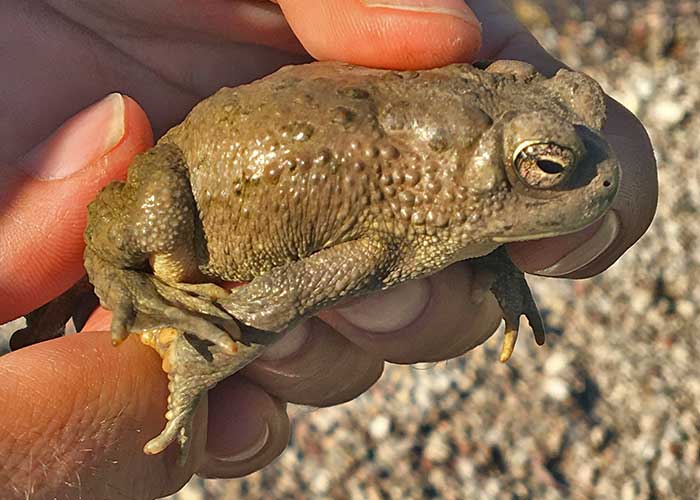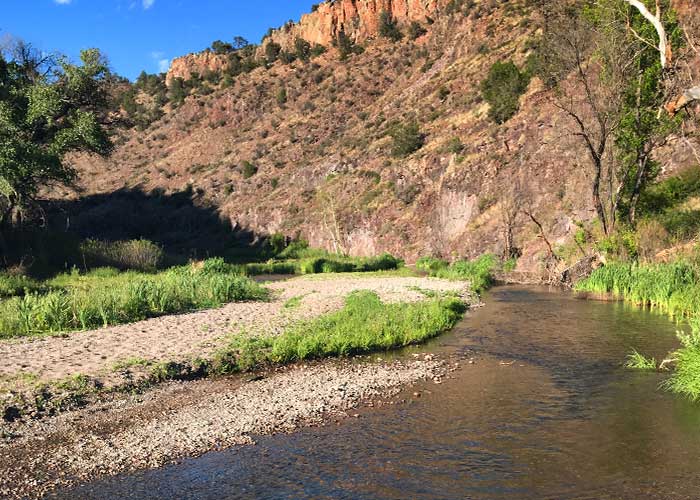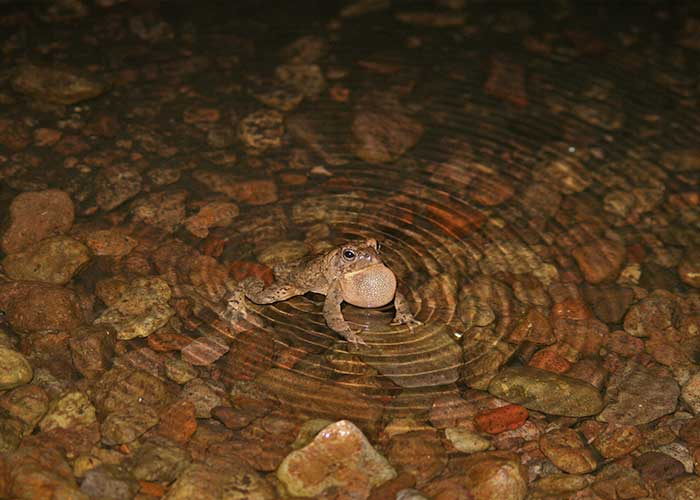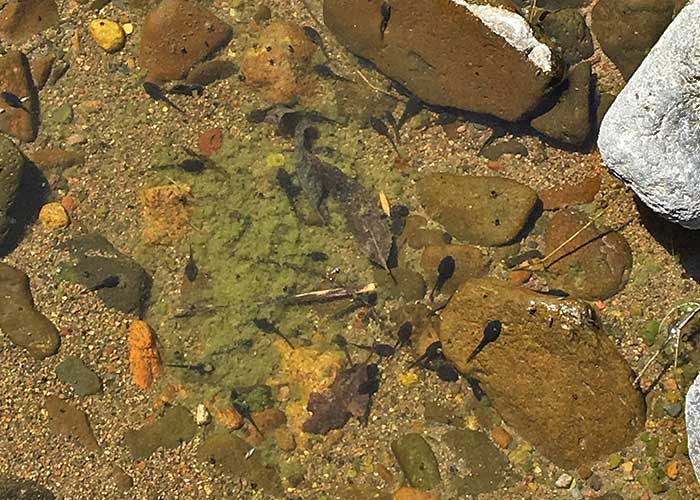Have you ever been camping out near a river, heard a trilling call at night, and wondered what it was? Well if you were out along the Gila, Mimbres, or San Francisco Rivers in March or April, you may have heard an Arizona toad.
Arizona toads breed in the early to mid-spring and you can find their tadpoles in May and June in the slower flowing, shallower parts of rivers in southwestern New Mexico. These toads may fit in the palm of your hand but they play an important role in the river ecosystem, eating insects and being preyed on by other species in turn. The toads are also not afraid of crossing the road- so if you’re out after dark in the Gila region in the spring and summer and you know there’s a river or other waterbody nearby, consider slowing down, keeping a sharp look out, and giving the toads a brake!

Arizona toad found along the Middle Fork of the Gila River. (Photo Ginny Seamster)

Middle Fork of the Gila River. (Photo Ginny Seamster)
Using funding from the Share with Wildlife program, Drs. Mason Ryan and Tom Giermakowski at the University of New Mexico are studying the Arizona toad. They are trying to better understand where the species is found, its current population trend, and whether recently observed declines in the species are the result of drought or other factors, such as disease. Thus far, surveys indicate the toads have bred in a number of streams, including the east, middle, and west forks of the Gila River. There were even tadpoles in small puddles in the Mimbres River channel, though the fate of those tadpoles and ability of any survivors to breed next year is far from certain.
Tom and Mason are swabbing toads to detect chytridiomycosis, a fungal disease that has wreaked havoc in many amphibian populations. They are also on the look-out for other pathogens and are collecting tadpoles, both to confirm the species’ distribution and to gather specimens that could potentially be used for future studies of species’ historical demographics, genetic connectivity, and morphology.

Arizona toad calling at night. (Photo Dr. Mason Ryan)

Tadpoles in a pool of water on the Mimbres River. (Photo Ginny Seamster)
